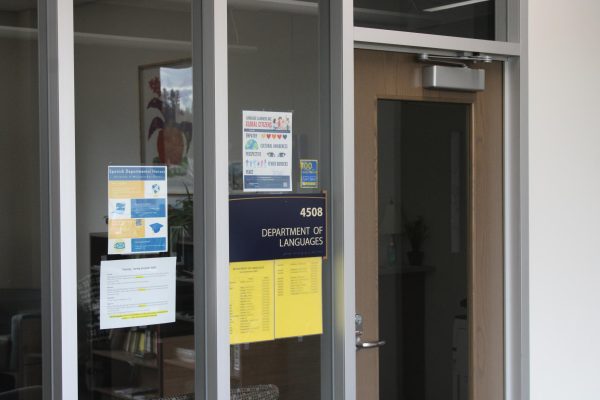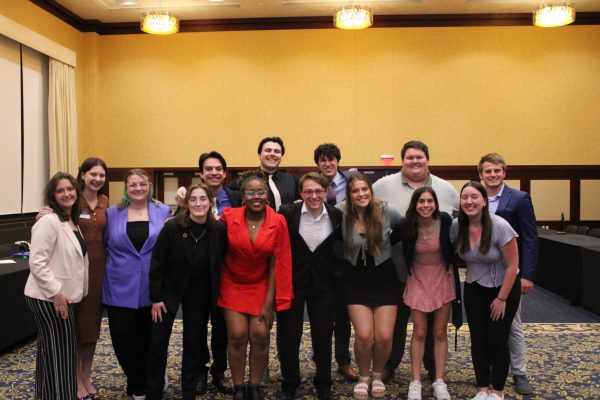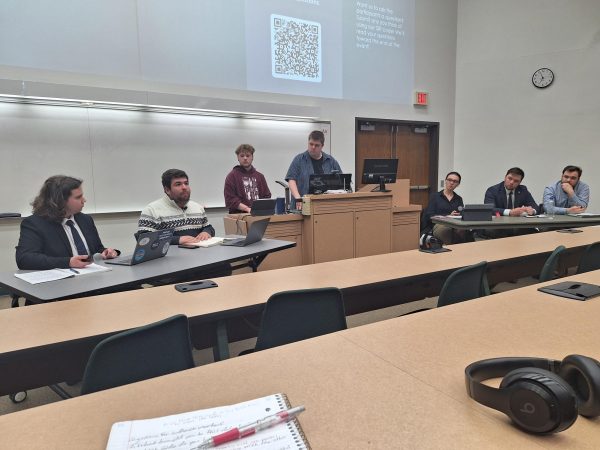Chippewa Valley rallies around region’s expected “skills gap”
Retiring baby boomers are forcing vacancies in nursing, information technology and skilled manufacturing
April 23, 2015
Jerry Stanislawski wouldn’t go back.
He had once, in 2003, after Hutchinson Technologies in Eau Claire laid him off the first time in 2000. And despite 10 stable years — seven as a supervisor — there’s not enough certainty in the company now. Not without a degree, he said.
“All you can do is smile and say, ‘I’m here another day,’” he said through a belly laugh. “That’s really the attitude a lot of people had. When you do get the word that you’re getting laid off, that’s a different story.”
Stanislawski, now 44, got the word in August 2012. He was one of eight supervisors left jobless from a round of layoffs after Hutchinson closed a department, he said.
So he started looking for something else. He interviewed several times, but his experience wasn’t enough. Most employers wanted to see a degree. Meanwhile, his wife, with a good job in insurance, stocked the fridge, paid the bills, Stanislawski said.
He learned in March 2013 he would qualify for Trade Adjustment Act funds, which pays tuition for laid-off workers to seek new skills. And after about four months on a waiting list, Stanislawski enrolled at Chippewa Valley Technical College in October 2013.
He’ll graduate in May with a two-year degree in Computer Numerical Control machining, using software to design and sculpt specialized industrial parts. Along with other professions like nursing and welding, CNC machinists are among the most in-demand workers in the Chippewa Valley. Machining jobs are expected to grow about 20 percent by 2017 — that translates to about 2,000 jobs in west-central Wisconsin, according to CVTC data.
Stanislawski is among the crop of workers who this spring will help fill the Eau Claire region’s “skills gap,” where jobs exist but qualified workers don’t.
Efforts to ease skills gap
Keith Karr, in a cloth cap and plastic safety glasses, surveyed his students dashing between welding stations Monday inside CVTC’s Eau Claire Gateway Campus, which houses manufacturing and technology classrooms.
Karr is a 20-year veteran welder. He has been teaching for three years; this is his first at CVTC.
His students here forged steel boxes patched together with a slew of welds. Some students scattered sparks across the concrete workroom floor, fusing caps to their boxes. Others hoisted a hose coiled with 26,000 pounds of compressed air to test the strength of their holds.
Karr’s students look for weak spots and leaks. Each box must be airtight, he said.
“You’re a tradesman,” Karr said. “We’re teaching you how to have pride in your work. You’ve got to know the agony when your (weld doesn’t hold).”
CVTC offers full-time and part-time day and evening welding class sections. Most folks in the welding program are in their mid-20s, but the program educates students fresh from high school and middle-age students seeking further skills or a second career, Karr said.
There’s steep demand for welding jobs in the region, he said. There are seven open welding jobs for every graduate, according to CVTC numbers.
A Wisconsin Workforce Development survey of 66 Chippewa Valley employers found 85 percent of employers have “difficulty” filling certain positions.
According to the study:
— Employers anticipate more than 1,000 open positions in the Chippewa Valley in the next two years
— For hard-to-fill openings, 25 percent of employers require no prior job experience; 86 percent require less than two years experience
— About 60 percent of jobs opening due to retirements require education ranging from a high school diploma to associate’s degree
Scott Hodek, economist at the Wisconsin Department of Workforce Development, authored the skills gap report and said because the economy is recovering from the 2008 recession, more older workers are mulling retirement. That’s creating an “employees market” in the region.
Although efforts to recruit and train workers to enter skilled trade fields will offset a wave of retiring baby boomers, there may not be enough young professionals locally to fill those jobs, Hodek said.
“If you don’t produce that here, you have to attract people with those skills,” he said. “That’s going to get harder and harder with the demographic shift.”
Bob McCoy, president and CEO of the Eau Claire Chamber of Commerce, said the Chippewa Valley skills gap is a problem mirrored statewide. As Wisconsin’s workforce ages, the state will need skilled youthful workers to replace those jobs.
“The problem is there’s not enough people coming down the pike,” he said. “That’s going to be a big challenge. I don’t know if you can get a robot to stock the shelves at the grocery store.”
And to attract young workers needed to fill these high-demand fields, Eau Claire needs to become a better place to live, McCoy said.
When companies can’t hire qualified workers they can’t expand, and neither can the region’s economy, he said.
But Eau Claire is well-positioned to grow, McCoy said. Eau Claire’s unemployment rate is about 4.3 percent, while Wisconsin’s is 5.2 percent, according to the Bureau of Labor Statistics.
And the Chippewa Valley fared better during the 2008 recession, partly because the region’s economy doesn’t depend on a single industry like it used to before Uniroyal Tire closed its Eau Claire plant in 1992, McCoy said.
The region’s economy is diverse, he said. And that’s a good sign for long-term stability.
This year, Michelle Farrow, membership coordinator for the Chippewa Falls Chamber of Commerce, launched a field trip for middle-schoolers and high-schoolers to tour businesses in need of skilled manufacturing.
The idea, she said, is to expose students to high-demand jobs.
“The key is, we have businesses in need and wonderful education, but they don’t talk to each other,” Farrow said. “All I’m doing is facilitating discussion.”
Many businesses now use equipment worth hundreds of thousands of dollars, like machines at CVTC that can engrave an interlocking gear design on the head of a dime. The prospect of operating a machine more expensive than a house usually gets kids excited, she said.
But often, the biggest challenge isn’t convincing kids to pursue a career in skilled trades, it’s convincing parents, Farrow said.
That might be because parents still see manufacturing as “dark, dangerous and dirty,” Farrow said. “Those shops are cleaner than my garage.”
If schools can show students early that math aptitude and work-ethic earns jobs, she said, those students will be better-positioned to land high-demand jobs close to home.
Classroom and workforce lessons
Although Stanislawski’s transition from full-time work to school has been difficult, there are skills he learned working at Hutchinson that he might not have absorbed in two years in college, he said.
He was a supervisor then — at one time, overseeing about 70 workers — so he knows how to work with people and how to gain respect as a manager.
Those skills will help him succeed when Stanislawski starts working full time where he’s interning now, at Wisconsin Metal Fab in Chippewa Falls.
Stanislawski said he has been able to relay lessons from his time at CVTC to his 9-year-old son and 11-year-old daughter. They talk about his path. His kids know how important school is, and they’re succeeding.
“What I try to do is set a good example with my grades, with my attendance and having a positive attitude,” he said. “The kids see how instructors respect me, because I respect them.”
This story was originally published on insideec.net.










